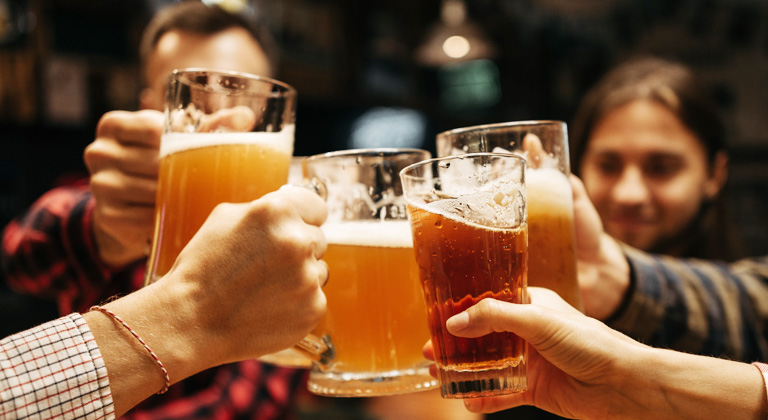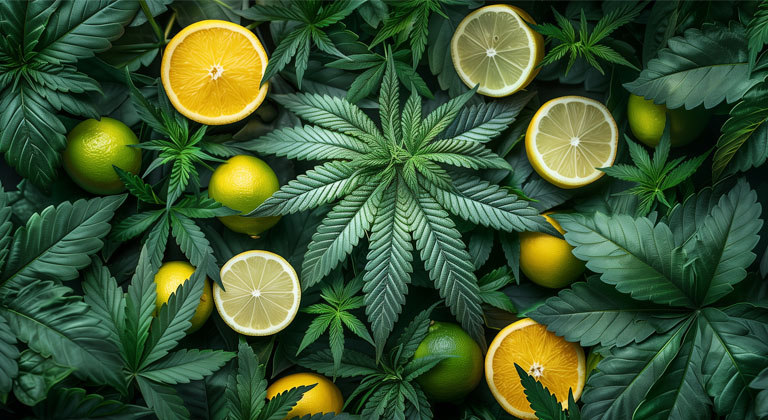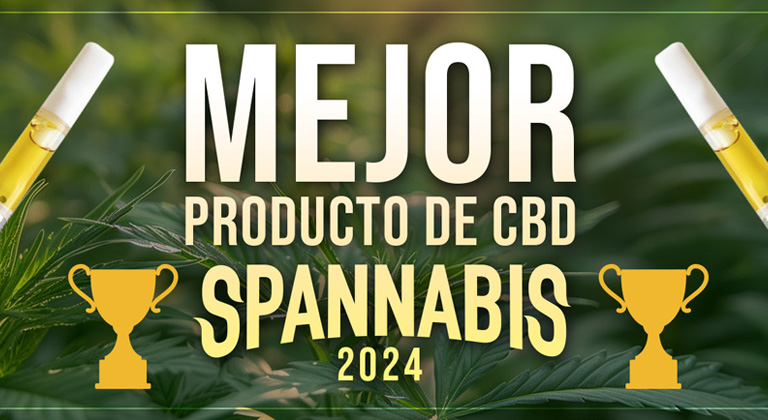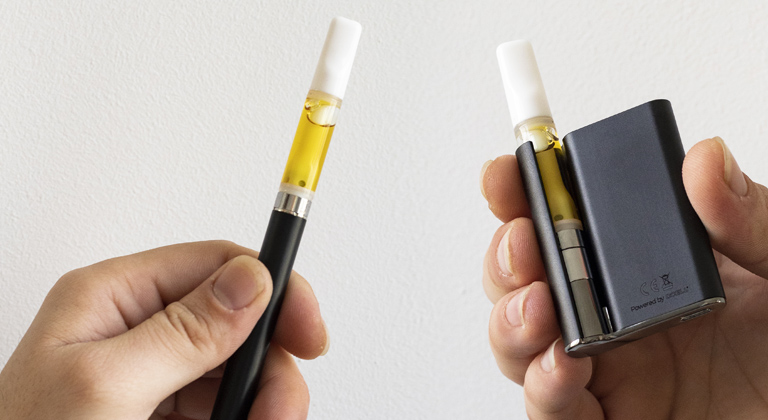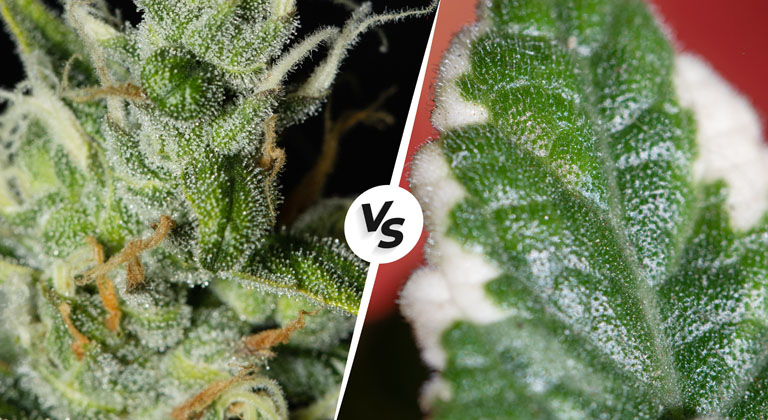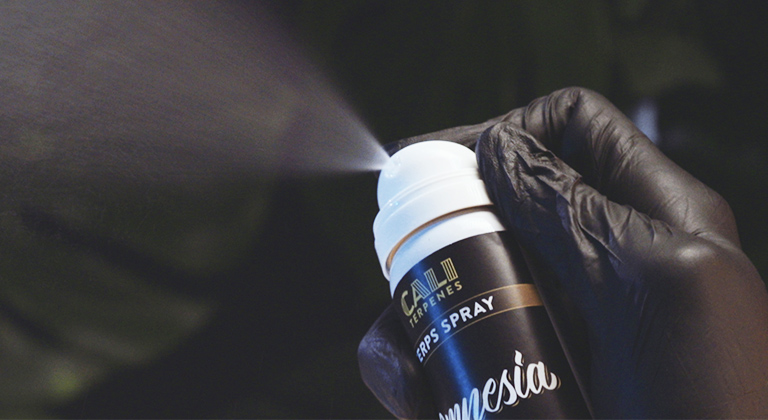The production of beer encompasses a wide variety of styles, each with unique characteristics in terms of flavor, aroma, and appearance. These styles are achieved through different processes and ingredient choices during the brewing process.
One of the key ingredients in most beers is hops, which contribute bitterness, aroma, and help with preservation. There are many different types of hops, each with its own distinct aromas that contribute to the beer’s formula.
The flavors and aromas that hops can provide to beer are due to their terpene profile, which is to say, the proportion of different terpenes contained in these hop flowers or pellets. Some terpenes that are commonly found in hops include Myrcene, Caryophyllene, and Humulene.
Do these three terpenes sound familiar to you? It turns out they are also present in the aromatic composition of many cannabis strains.
As we explained in our post on hops and cannabis, these plants are of the same species and share some terpenes in common, although cannabis plants have a much broader, and often different, terpene profile compared to hops. However, hops are an essential ally when it comes to completing certain aromas, as we explain below.
The Secret to Using Terpenes in Beer
In this article, we explain the reasons for using our terpenes in beer production, as well as the recommended usage proportions and some tricks that will help you create different beers, play around with different hops, and even save on resources with better results.
Why use Terpenes when Making Beer?
Using terpenes to create beer not only allows you to make that have cannabis aromas and flavors, but it also offers other interesting possibilities that some breweries are already taking advantage of.
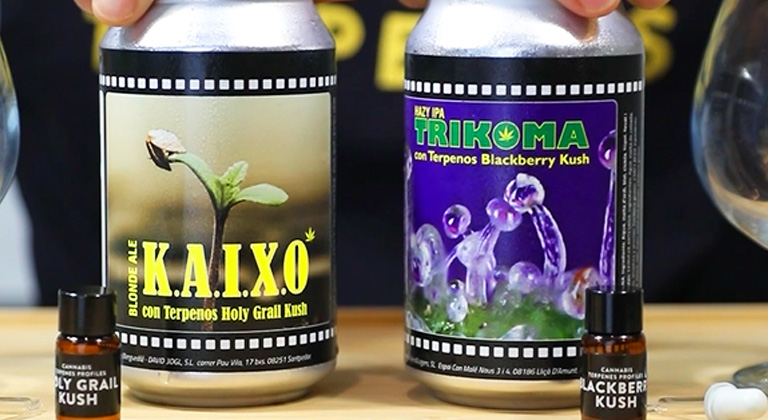
Using Terpenes like Hops
As we explained in the introduction of this article, cannabis and hops share some terpenes in common. However, cannabis has more complex aromatic notes due to a greater number of different terpenes, including some that are not present in hops.
Based on this premise, it’s possible to use terpene profiles just like aromatic extracts from hops. Some terpenes have aromas that are more similar to classic hop strains, while others will stand out in other scents and flavors, ranging from citric to herbal, fruity, and spicy.
By adding terpene profiles to beer, existing flavors can be enhanced or complemented, creating additional nuances and complexity.
Plus, terpenes can help compensate for the lack of specific hops in original beer recipes. If a particular strain of hops is not available or difficult to obtain, terpenes can be an alternative to provide some of the desired flavor and aromatic profiles. This allows brewers to maintain consistency and quality in their beers, even in situations where traditional ingredients are not easily accessible.
Cali Terpene’s profiles are identical in each batch, so they can also be use a always consistent stabd-in hop strain in terms of aroma and flavor.
It’s important to note that the use of terpenes as substitutes for hops or to enhance beer nuances should be done with caution and knowledge of the appropriate proportions. Terpenes are highly concentrated and can have a significant impact on the taste and aroma of the beer. Brewers should consider the intensity of terpenes and how they will blend with other ingredients to achieve a proper balance and desired flavor profile.
To summarize, terpenes can be used to complement or adjust hop aromas, as well as to achieve aromatic nuances that can’t be achieved solely through the addition of hops.
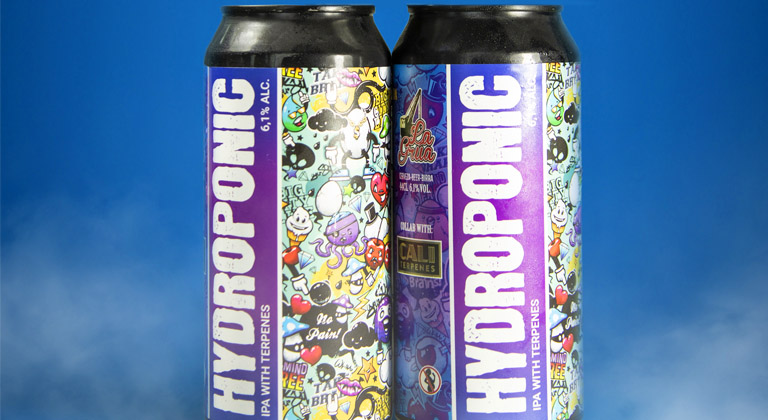
Using Terpenes to Create Cannabis Beer
Obviously, one of the most common and successful uses of cannabis terpene profiles in beer brewing is precisely the goal of creating cannabis beer. We have experienced on multiple occasions the great power of a product with cannabis flavors, and cannabis beer is one of the products that we have seen sell easily and quickly. However, it’s essential that it is well made if you are looking for a positive response from all consumers.
To achieve this, it is very important to consider a few things:
- The ingredients and quantities that will be used, as well as the real objective of the beer, because feedback will not be the same for a beer where the cannabis flavor is clearly noticeable compared to one where you have to struggle to find it.
While it’s true that you can create cannabis beer with almost any beer style, it’s important to note that the more elements come into play in the equation, the more difficult it will be to highlight cannabis aromas. For example, it’s much easier to brew a blonde ale, an IPA, or a NEIPA where cannabis aromas stand out compared to brewing a beer with different hops, fruits, or even coffee and expecting the terpenes to be the first thing the consumer perceives, because despite their high intensity, they will blend with the many other aromas. From our point of view, that would be considered a beer with terpenes rather than cannabis beer.
Using terpenes to create conceptual and innovative flavors
- Flavors and aromas provided by terpene profiles in beer can also be used to create what are known as “conceptual flavors”. For example, products that have names like “Exotic,” “Jungle,” “Tropical,” or others like “Mystery flavor” or “Mediterranean flavor.”
- This type of product classification is pretty common among other types of drinks such as energy drinks.
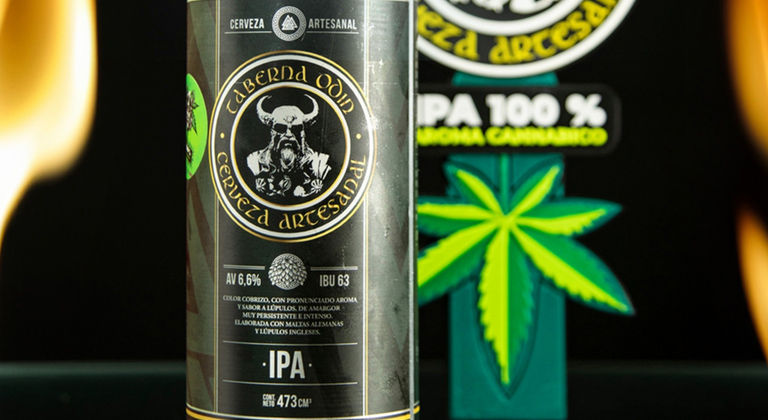
Using Terpenes to Create a Special 0.0% Beer
More and more people are enjoying non-alcoholic beers with 0.0% alcohol content. One of the most important factors in captivating and satisfying these consumers is the flavor of the beer, as it plays a crucial role in their decision to choose one brand over another.
That’s why the use of terpenes in a 0.0% beer can be done in any of the ways mentioned before, either to create unique flavors simply with aromatic nuances of the terpenes or to create a cannabis-infused 0.0% beer.
Using Terpenes to Standardize your Beer
When it comes to standardizing the ingredients and manufacturing of each beer, breweries face some challenges:
- Sometimes it’s difficult or impossible to acquire certain hop strains due to limited availability. However, in these cases, brewers can turn to alternatives like terpene profiles to achieve similar results or to always have access to the same ingredient, without variations or lack of stock.
- The variability of the hop’s aromatic profile across batches, crops, or suppliers doesn’t always guarantee consistent aromatic quality in the beer. This is where terpene profiles can be another option to use a stable ingredient that always provides the same aroma and flavor.
Using terpenes to create conceptual and innovative flavors
• Flavors and aromas provided by terpene profiles in beer can also be used to create what are known as “conceptual flavors”. For example, products that have names like “Exotic,” “Jungle,” “Tropical,” or others like “Mystery flavor” or “Mediterranean flavor.”
• This type of product classification is pretty common among other types of drinks such as energy drinks.
Why use Cali Terpenes Instead of Others?
- True to the aromas of each cannabis strain. If you’re looking to brew a beer with cannabis flavor and aroma, use our profiles to receive positive feedback from your followers and allow them to finally enjoy the real taste and scent of each strain.
- Unique terpene profiles. We offer unique terpene profiles, both by including super special strains not found in other brands and by reproducing every single terpene from the original cannabis profile.
- Undiluted pure terpenes. Unlike some of our competitors, our terpenes are completely pure, without diluents. Experience the effectiveness of our aromas.
- Availability of terpenes with greater water solubility. Make your beverage balanced and stable with our 100% pure water-soluble terpene..
- Specialized guidance. Not only do we understand terpenes and cannabis, but we also have extensive experience in the food industry and have specialized personnel in the production and creation of terpene-infused beers and other beverages.
If you still need more reasons, visit “Why Choose Cali Terpenes.”
How to add terpenes to beer
Once you’ve chosen a strain to use, taking into account what we mentioned earlier, it’s time to start getting to work.
To be practical when working with Cali Terpenes, you can follow these tips:
Adding terpenes during beer maturation
• The quickest and easiest way to get a good idea of how terpenes will interact with your beer and to familiarize yourself with the strain you’ve acquired is to take 1 liter of a beer you have in maturation and add 1 or 2 drops of your chosen terpene profile (each 1ml contains about 40 drops), which is the recommended amount for testing to see which aromatic profile complements which beer style.
• It’s advisable to increase maturation temperatures to around 12 – 14 ºC (as if you were dry-hopping) so it’s not cold when the drops are added. Wait a few minutes after mixing for the different aromatic nuances to emerge.
• Depending on the results, you can deduce whether you’ll need more or less terpenes for your desired outcome.
Add terpenes during dry-hopping:
- Another excellent option is to add terpenes during dry-hopping for an aromatic explosion already provided by this process with hops. Keep in mind that if you use the same terpene concentration as during maturation but during dry-hopping, the terpene profile will be more integrated and more present in the beer, reinforcing bitterness and flavor nuances, similar to adding another hop or hop extract.
What to do if you added terpenes during dry hopping and the beer is low in terpene flavor:
- If you added the terpenes during the dry hopping process and the beer lacks intensity, you can always add a few milliliters during maturation. Using the previously mentioned “Corny” test, you can find a good final balance.
This is a commonly used technique by brewers as it allows them to adjust the aroma of the beer on two separate occasions during the process. For example, if you’re brewing a beer without dry hopping, you can add the terpenes directly during maturation.
What to do if you added terpenes during dry hopping and the beer is strong in terpene flavor:
- If you added the terpenes during dry hopping and the flavor is too intense, you can let the beer mature in cold conditions to reduce the potency of the Cali Terpenes and bring out the hop flavors to soften the beer.
- Since brewers are usually familiar with the dry hopping process, it’s important to consider the number of days of dry hopping when adding the terpenes. Typically, it’s recommended to add them during the last 2 or 3 days of dry hopping at fermentation temperatures suitable for ale, around 18-22°C. These ranges may vary depending on the beer style and brewer’s preferences, but it’s important to note that temperatures above 50°C are not suitable for working with terpenes. Whirlpooling is not recommended.
Tips during the brewing process:
- Always work during the cold phase of the beer brewing process.
How Much Terpenes to Add to the Beer?
The amount of terpenes to use in beer depends on the objectives and ingredients used in the formulation, such as creating a cannabis-flavored beer or complementing the beer’s aroma. It also depends on the desired aromatic intensity.
Despite all terpenes being pure, each terpene profile has its own aromatic nuances that will be perceived to a greater or lesser extent depending on the ingredients used.
Taking all of this into account, the approximate proportions for creating a cannabis-flavored beer are:
- 0.01 to 0.05 ml of terpenes per 1L of beer
Or, in other words:
- 10 ml to 50 ml of terpenes per 1000L of beer.
If you simply want to add aromas with the terpenes as if they were other hops, the proportion will depend on your aromatic goal. As mentioned before, it’s good to add some during dry hopping and, if necessary, also during maturation.
Enjoy your exploration of terpenes and beer!
As well as Cannabis, are there Hop Terpene Profiles Available at Cali Terpenes?
Just as we create terpene profiles for different cannabis strains, Cali Terpenes also reproduces terpene profiles of hops.
You may be wondering, what are the main advantages of using hop terpene profiles instead of flowers or pellets?
Well, here are a few reasons:
- Are you planning to repeat a beer production but can’t due to the lack of a specific hop? We can faithfully reproduce the aroma and flavor of any hop strain, using qualiyu samples of hop flowers, so that you never run out of that aroma you love for your beer.
- The possibility to use an ingredient that always provides the same aroma and flavor. As you may know, depending on the batch, cultivation, and producer of the hop flowers or pellets, they will contribute different flavors and aromas, even when using the same strain. This way, you can standardize the taste of your beer and always offer your followers the same quality.
- Stop buying more and more refrigerators and cold storage rooms to store hops. Store only what you need, as hop terpene profiles provide a lot of aroma in a small space.
Additional recommendations when creating your own beer with terpenes:
- It’s important to note that the use of terpenes as substitutes for hops or to enhance beer nuances should be done with caution and knowledge of the appropriate proportions. Terpenes are highly concentrated and can have a significant impact on the taste and aroma of the beer.
- Contact our technical team with any questions. We can also guide you in finding a terpene profile, proportion, and suitable process to achieve your desired goal, ensuring a successful creation.
We also recommend considering the following points:
- Familiarize yourself with terpene profiles: explore the different terpenes we have available and their aromatic profiles. Each terpene profile has unique characteristics that can be used in very different beer styles.
- Consider beer styles: when choosing terpenes for your beer, take into account traditional styles and how the flavors and aromas of the terpenes can complement them.
- Experiment in moderation: our terpenes easily contribute flavor and aroma, so we always recommend contacting us to adjust the proportions and conducting small-scale tests if possible. Also, remember that you can add terpenes at different steps during the beer brewing process to add a final touch of aroma if desired. The choice of ingredients and their proportions are key to success with this type of beer.
- Quality of terpenes: make sure to obtain high-quality and safe terpenes for consumption. Terpenes should be specifically made for use in food and beverages, and it is important to follow the dosage instructions provided by the manufacturer.
- Document your results: keep records of the amounts and combinations of terpenes you use, as well as the beer styles in which you apply them. This will help you continue learning, adjust your recipes accordingly, and replicate them perfectly if needed.
Remember that adding terpenes to beer is an experimental and personal process, and tastes and objectives may vary as explained in this article. It is always recommended to try different combinations and adjust the amounts according to your preferences and desired results.
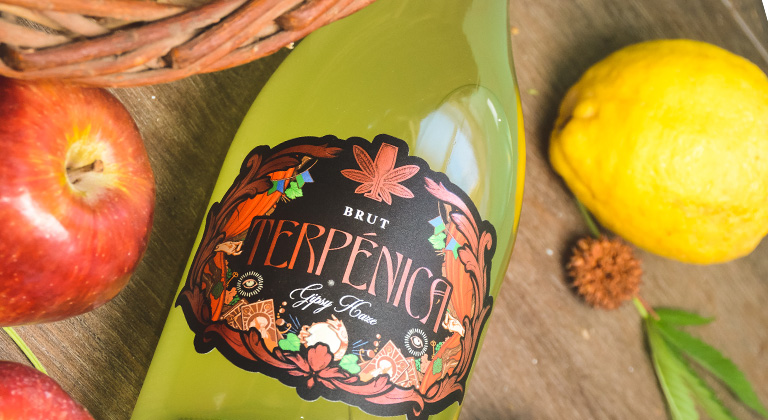
As you can see, terpenes have a multitude of possibilities in the world of beer, beverages, and gastronomy in general.
Dive into this aromatic world and create unique products!
And if you have any questions, remember that you can leave a comment on this post or contact our team to address your concerns.
Cali Terpenes

